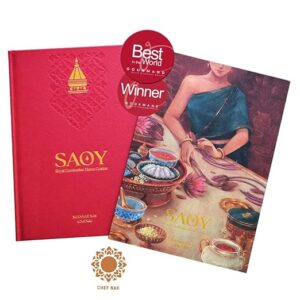The archaeological site of Sambor Prei Kuk, “the temple in the richness of the forest” in the Khmer language, has been identified as Ishanapura, the capital of the Chenla Empire (Chenla Kingdom) that flourished in the late 6th and early 7th till 9th centuries CE. It is located in Kampong Thom Province, 30 km (19 miles) north of Stueng Sen city, 176 km (109 miles) east of Angkor and 206 (128 miles) north of Phnom Penh.

The vestiges of the city cover an area of 25 square kilometers and include a walled city center as well as numerous temples, ten of which are octagonal, unique specimens of their genre in southeast Asia. Decorated sandstone elements in the site are characteristic of the pre-Angkor decorative idiom, known as the Sambor Prei Kuk Style. Some of these elements, including lintels, pediments, and colonnades, are true masterpieces. The art and architecture developed here became models for other parts of the region and lay the ground for the unique Khmer style of the Angkor period.
The ruined complex established by King Isanavarman I as central royal sanctuary and capital, known then as Isanapura. The central part of Sambor Prei Kuk is classified into three main groups Each group has a square layout surrounded by a brick wall such as group C for Central, N for North and S for South. Normally, they are enclosed in a double-walled encircling 1,000 acre in which there were 150 Hindu temples today mostly in ruins.
- Group N: Prasat Sambor is considered the main temple and it dates from the 7th century. It was dedicated to one of the reincarnations of Shiva known as Gamhireshvara.
- Group S: Prasat Yeah Puon comprised a total of 22 sanctuaries (5 have octagonal shapes) with two wall rampart, and was built of brick, masonry, laterite, and sandstone in the rectangular form in the 7th century (600-635) during the reign of Isanavarman I to dedicated to Shiva. They were built on a hill with Gopura from the eastern and western entrances joining to an outside laterite rampart. The inner rampart reached by gateways from the four directions and joined to the brick rampart carved in various clustering figures.
- Group C: It is occupied by the Central Sanctuary or Prasat Boram with lion sculptures that had inspired the popular name of Prasat Tao (The Lions’ Temple). It is, however, the newest group dating the 9th century. The other main feature is the Tower of Ashram Issey, but there were also other constructions (18 temples) now in ruin.
According to several documents, there are a few kings reigned over this site. Isanavarman I reigned over the Chenla Kingdom between 616 and 637 AD. The last important king in Isanaoura was Jayavarman I, whose death caused turmoil to the kingdom at the start of the 8th century, breaking it in many principalities and opening the way to a new time” Angkor”. This site is also claimed as an early capital of Jayavarman II.
Later the Lon Nol’s coup d’état to Prince Norodom Sihanouk in 1970, US President Richard Nixon ordered a secret bombing of Cambodia to fight the Khmer Rouge guerrillas and any influence of North Vietnam in the country. The US aircraft bombed positions inside the archaeological site, causing craters near the temples, while the guerrillas left several mines on the land that were cleared only in 2008. Furthermore, this site was also added to the UNESCO World Heritage Tentative List on January 1, 1992, in the Cultural category. On July 8, 2017, Sambor Prei Kuk temple was officially inscribed as World Heritage site by UNESCO as “Temple Zone of Sambor Prei Kuk Archaeological Site of Ancient Ishanapura” in Krakow, Poland.
For further information, please access via: Temple Zone of Sambor Prei Kuk Archaeological Site of Ancient Ishanapura
Gallery








